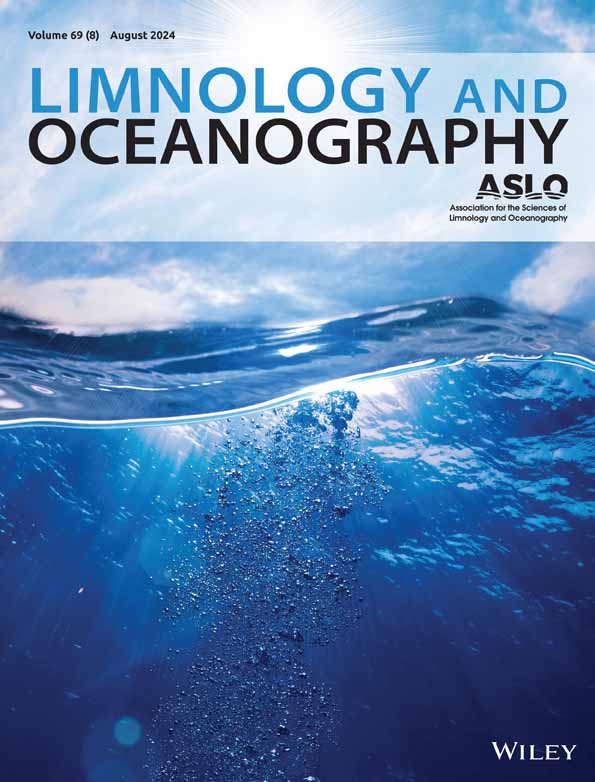Heterotrophy of particulate organic matter subsidies contributes to divergent bleaching responses in tropical Scleractinian corals
IF 3.8
1区 地球科学
Q1 LIMNOLOGY
引用次数: 0
Abstract
Heterotrophic feeding on plankton and particulate organic matter (POM) by tropical Scleractinian corals is known to aid in the resistance and recovery from thermally induced bleaching. However, the relative importance of heterotrophy in promoting bleaching resistance and recovery is likely to vary based on ecological context and the severity of heat stress. In 2019, the Pacific Island of Mo'orea experienced mass coral mortality during a widespread marine heatwave. Many颗粒有机物补贴的异养有助于热带核状珊瑚的不同漂白反应
热带硬核珊瑚以浮游生物和颗粒有机物(POM)为食的异养性食物有助于抵抗和从热白化中恢复过来。然而,异养在促进白化抗性和恢复方面的相对重要性可能因生态环境和热胁迫的严重程度而异。2019年,太平洋Mo'orea岛在广泛的海洋热浪中经历了大规模珊瑚死亡。在浅礁坡(5米)上的许多Acropora hyacinthus菌落对白化具有抗性,而在深礁前(14米)上的菌落经常白化并随后恢复,尽管有类似的热应力。利用脂肪酸(FA)、同位素和元素生物标志物研究了异养在这种发散性漂白反应中的作用。多种互补的证据,包括取食指标、同位素生态位重叠和假定的POM FA生物标志物,表明抗漂白菌落可能比漂白和恢复的同类菌落消耗更多的POM。此外,虽然目视恢复,但恢复后的菌落的寄主能量仍然受到损害,呈现出比抗性菌落更少的单不饱和脂肪酸和多不饱和脂肪酸以及相对氮含量。我们表明,更多依赖异养营养获取的珊瑚可以更好地抵抗热诱导的漂白。我们的研究结果还显示,即使在视力恢复后,漂白也会带来长期的能量消耗。最终,这些结果强调了珊瑚营养在塑造珊瑚白化反应和恢复中的重要作用。
本文章由计算机程序翻译,如有差异,请以英文原文为准。
求助全文
约1分钟内获得全文
求助全文
来源期刊

Limnology and Oceanography
地学-海洋学
CiteScore
8.80
自引率
6.70%
发文量
254
审稿时长
3 months
期刊介绍:
Limnology and Oceanography (L&O; print ISSN 0024-3590, online ISSN 1939-5590) publishes original articles, including scholarly reviews, about all aspects of limnology and oceanography. The journal''s unifying theme is the understanding of aquatic systems. Submissions are judged on the originality of their data, interpretations, and ideas, and on the degree to which they can be generalized beyond the particular aquatic system examined. Laboratory and modeling studies must demonstrate relevance to field environments; typically this means that they are bolstered by substantial "real-world" data. Few purely theoretical or purely empirical papers are accepted for review.
 求助内容:
求助内容: 应助结果提醒方式:
应助结果提醒方式:


